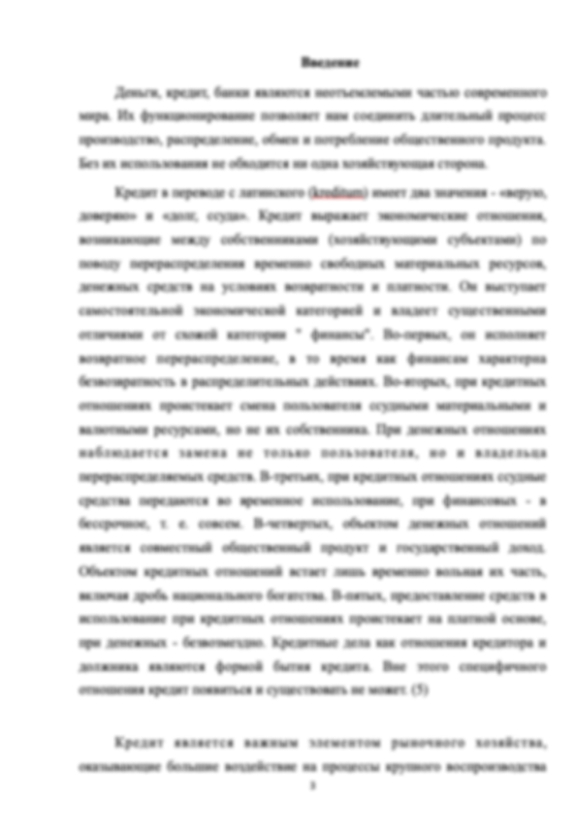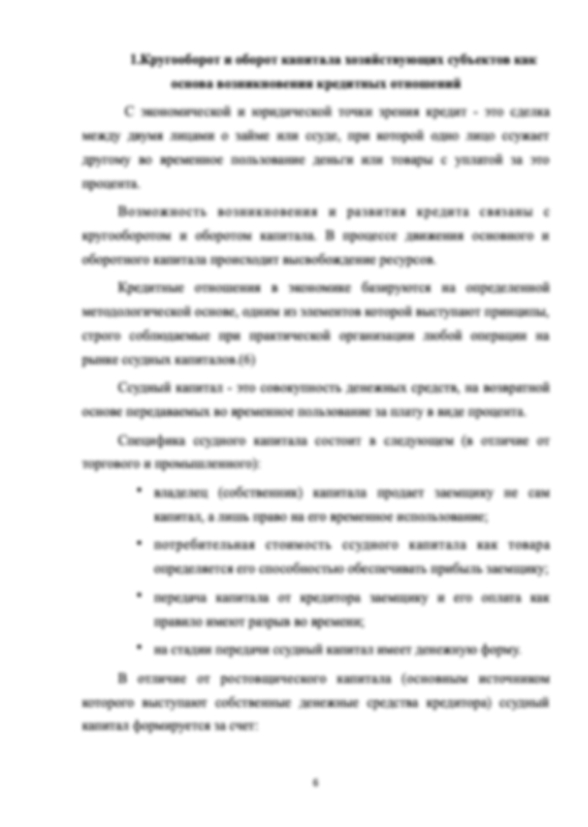Спасибо!
Информация о работе
Подробнее о работе

Применение полимеров и полимерных материалов в добыче нефти
- 38 страниц
- 2022 год
- 1 просмотр
- 0 покупок
Гарантия сервиса Автор24
Уникальность не ниже 50%
Фрагменты работ
Встречающиеся в природе полимерные материалы состоят из многих компонентов, включая целлюлозу, лигнин, гемицеллюлозу, крахмал, белки, жиры и т.д. [1,2]. На протяжении многих лет использование данных компонентов ограничивалось их чистыми формами в качестве отдельных материалов. Чтобы получить и использовать данные компоненты в их чистых формах, природные многокомпонентные материалы подвергаются определенным процессам, включающим экстракцию, фракционирование и другие формы физической и химической ...
СОДЕРЖАНИЕ
ВВЕДНИЕ
ГЛАВА 1. Состав некоторых природных многокомпонентных материалов
ГЛАВА 2. Материалы биологического происхождения для приготовления бурового раствора
ГЛАВА 3. Использование возобновляемых ресурсов для химического повышения нефтеотдачи пластов (ПНП)
ГЛАВА 4. Контроль воды и газа на нефтяном месторождении с использованием природного полимера
ЗАКЛЮЧЕНИЕ
СПИСОК ИСПОЛЬЗОВАННЫХ ИСТОЧНИКОВ
Работа раскрывает применение различных полимеров в процессе добычи нефти, показывая вовлечение неперерабатываемого в промышленности сырья в необходимые компоненты бурильных растворов и соединение помогающих в огромной степени высвобождать нефть из пластов.
Работа имеет высокую оригинальность так как состоит не из кусков чужих работ, а написана согласно представленной ниже литературе.
[1] Murr L.E. Examples of natural composites and composite structures // Springer International Publishing. Cham. 2015. P. 425–449. https://doi.org/10.1007/978-3-319-01815-7_25.
[2] Olatunji O. Classification of natural polymers // Springer International Publishing. Cham. 2016. P. 1–17. https://doi.org/10.1007/978-3-319-26414-1_1.
[3] Li Y., Liu Y., Chen W., Wang Q., Liu Y., Li J., Yu H. Facile extraction of cellulose nanocrystals from wood using ethanol and peroxide solvothermal pretreatment followed by ultrasonic nanofibrillation // Green Chem. 2016. V. 18. P. 1010–1018. https://doi.org/10.1039/C5GC02576A.
[4] Kraak A. Industrial applications of potato starch products // Ind. Crops Prod. 1992. V. 1. P. 107–112. https://doi.org/10.1016/0926-6690(92)90007-I.
[5] Biswas A., Kim S., Selling G. W., Cheng H. N. Conversion of agricultural residues to carboxymethylcellulose and carboxymethylcellulose acetate // Ind Crops Prod. 2014. V. 60. P. 259–265. https://doi.org/10.1016/j.indcrop.2014.06.004.
[6] Mohlala L. M., Bodunrin M.O., Awosusi A.A., Daramola M.O., Cele N.P., Olubambi P.A. Beneficiation of corncob and sugarcane bagasse for energy generation and materials development in Nigeria and South Africa: a short overview // Alex Eng. J. 2016. V. 55. P. 3025–3036. https://doi.org/10.1016/j.aej.2016.05.014.
[7] Sheldon R.A. Green and sustainable manufacture of chemicals from biomass: state of the art // Green Chem. 2014. V. 16. P. 950–963. https://doi.org/10.1039/C3GC41935E.
[8] Templeton D.W., Scarlata C.J., Sluiter J.B., Wolfrum E.J. Compositional analysis of lignocellulosic feedstocks method uncertainties // J Agric Food Chem. 2010. V. 2. P. 9054–9062. https://doi.org/10.1021/jf100807b.
[9] Sluiter J.B., Ruiz R.O., Scarlata C.J., Sluiter A.D., Templeton D.W. Compositional analysis of lignocellulosic feedstocks. Review and description of methods // J Agric Food Chem. 2010. V.58. P. 9043–9053. https://doi.org/10.1021/jf100807b.
[10] Vassilev S.V., Baxter D., Andersen L.K., Vassileva C.G. An overview of the chemical composition of biomass // Fuel. 2010. V. 89. P. 913–933. https://doi.org/10.1016/j.fuel.2009.10.022.
[11] Briones R., Serrano L., Younes R.B., Mondragon I., Labidi J. Polyol production by chemical modification of date seeds // Ind Crops Prod. 2011. V. 34. P. 1035–1040. https://doi.org/10.1016/j.indcrop.2011.03.012.
[12] Adewole J.K., Sultan A.S. A study on processing and chemical composition of date pit powder for application in enhanced oil recovery // Defect Diffusion Forum. 2014. V. 353. P. 79–83. https://doi.org/10.4028/www.scientific.net/DDF.353.79.
[13] Adewunmi A.A., Ismail S., Sultan A.S. Laboratory scale study on rheological behavior, morphological and structural properties of crosslinked polyacrylamide composite hydrogels embedded with date seed powder // J Appl Polym Sci. 2015. V. 132. https://doi.org/10.1002/app.42110.
[14] Chanda M., Roy S.K. Industrial polymers, specialty polymers, and their applications. CRC Press Taylor & Francis Group. Boca Raton // 2009. P.1–432. https://doi.org/10.1201/9781420080599.
[15] Besbes S., Blecker C., Deroanne C., Drira N.E., Attia H. Date seeds: chemical composition and characteristic profiles of the lipid fraction // Food Chem. 2004. V. 84. P. 577–584. https://doi.org/10.1016/S0308-8146(03)00281-4.
[16] Fink J.K.. Petroleum engineer’s guide to oil field chemicals and fluids. Chapter 1—drilling muds. Gulf Professional Publishing. Boston // 2012. P. 1–59. ISBN: 9780128037355.
[17] Fink J.K. Petroleum engineer’s guide to oil field chemicals and fluids. Chapter 2—fluid loss additives. Gulf Professional Publishing. Boston // P. 61–123. ISBN: 9780128037355.
[18] Fink J.K. Petroleum engineer’s guide to oil field chemicals and fluids. Chapter 16—enhanced oil recovery. Gulf Professional Publishing. Boston // P. 459–517. ISBN: 9780128037355.
[19] Agbasimalo N., Radonjic M. Experimental study of the impact of drilling fluid contamination on the integrity of cement–formation interface // J Energy Res Technol. 2014. V. 136. P. 042908–042908. https://doi.org/10.1115/1.4027566.
[20] Zheng Y., She C., Yao K., Guo X., Zhang H., Yang T., Li M. Contamination effects of drilling fluid additives on cement slurry // Nat Gas Ind B. 2015. V. 2. P.354–359. https://doi.org/10.1016/j.ngib.2015.09.009.
[21] Sami N.A. Effect of magnesium salt contamination on the behavior of drilling fluids // Egypt J Pet. 2016. V. 25. P.453–458. https://doi.org/10.1016/j.ejpe.2015.10.011.
[22] EIA US energy information administration, international energy statistics. 2018. http://www.eia.gov.
[23] OPEC (2018) OPEC Annual Statistical Bulletin. Retrieved 3rd January 2018, 2018. http://www.opec.org/opec_web/en/publicatio ns/202.htm
[24] Adewole J.K., Najimu M.O. A study on the effects of date pitbased additive on the performance of water-based drilling fluid // J Energy Res Technol. 2017. V. 140. P.052903–052903. https://doi.org/10.1115/1.4038382.
[25] Amanullah M. Characteristics, behavior and performance of arc plug—a date seed-based sized particulate LCM // Society of Petroleum Engineers. 2016. https://doi.org/10.2118/182840-MS.
[26] Amanullah M., Ramasamy J., Al-Arfaj M.K., Aramco S. (2016) Application of an indigenous eco-friendly raw material as fluid loss additive // J Petrol Sci Eng. 2016. V. 139. P. 191–197. https://doi.org/10.2118/182840-MS.
[27] Amanullah M., Al-Arfaj M., Gadalla A., Saleh R., El-Habrouk I., Al-Dhafeeri B., Khayat A. Date seed-based particulate LCM “ARC plug”—its development, laboratory testing and trial test results // Society of Petroleum Engineers. 2017. https://doi.org/10.2118/187988-MS.
[28] Wajheeuddin M., Hossain M.E. Development of an environmentally - friendly water-based mud system using natural materials // Arab J Sci Eng. 2017. https://doi.org/10.2118/187988-MS.
[29] AlAwad M.N.J., Fattah K.A. Superior fracture-seal material using crushed date palm seeds for oil and gas well drilling operations // J King Saud Univ Eng Sci. 2017. V. 31. P. 97–103. https://doi.org/10.1016/j.jksues.2017.01.003.
[30] Bonferoni M.C., Rossi S., Tamayo M., Pedraz J.L., Dominguez-Gil A., Caramella C. On the employment of λ-carrageenan in a matrix system. I. Sensitivity to dissolution medium and comparison with Na carboxymethylcellulose and xanthan gum // J Control Release. 1993. V.26. P.119–127. https://doi.org/10.1016/0168-3659(93)90111-H.
[31] Ademiluyi T., Joel O.F., Amuda A.K. Investigation of local polymer (cassava starches) as a substitute for imported sample in viscosity and fluid loss control of water based drilling mud // ARPN J Eng Appl Sci. 2011. V. 6. P. 43–48.
[32] Alsabagh A.M., Abdou M.I., Khalil A.A., Ahmed H.E., Aboulrous A.A. Investigation of some locally water-soluble natural polymers as circulation loss control agents during oil fields drilling // Egypt J Pet. 2014. V. 23. P. 27–34. https://doi.org/10.1016/j.ejpe.2014.02.005.
[33] Kafashi S., Rasaei M., Karimi G. Effects of sugarcane and polyanionic cellulose on rheological properties of drilling mud: an experimental approach // Egypt J Pet. 2017. V. 26. P. 371–374. https://doi.org/10.1016/j.ejpe.2016.05.009.
[34] Wang X., Zhang Y., Lv F., Shen B., Zhang R., Zhou F., Chu P.K. (2011) Cross-linked polystyrene microspheres as density-reducing agent in drilling fluid // J Petrol Sci Eng. 2011. V. 78. P. 529–533. https://doi.org/10.1016/j.petrol.2011.06.016.
[35] Cunha J.C., Rosa F.S.N. (1998) Underbalanced drilling technique improves drilling performance - a field case history // Society of Petroleum Engineers. 1998. https://doi.org/10.2118/47802-MS.
[36] Adewole J.K., Najimu M.O., Adewunmi A.A. Date pit-based additive as density reducing agent in underbalanced drilling. SPE/IADC Middle east drilling technology conference and exhibition // UAE, Abu Dhabi. 2018. https://doi.org/10.2118/189428-MS.
[37] Khalil M., Mohamed Jan B. Herschel–Bulkley rheological parameters of a novel environmentally friendly lightweight biopolymer drilling fluid from xanthan gum and starch // J Appl Polym Sci. 2012. V. 124. P. 595–606. https://doi.org/10.1002/app.35004.
[38] Iglauer S., Wu Y., Shuler P., Tang Y., Goddard W.A. (2010) New surfactant classes for enhanced oil recovery and their tertiary oil recovery potential // J Petrol Sci Eng. 2010. V. 71. P. 23–29. https://doi.org/10.1016/j.petrol.2009.12.009.
[39] Majidaie S., Muhammad M., Tan I.M., Demiral B., Lee S.Y.C. Non-petrochemical surfactant for enhanced oil recovery // SPE EOR conference at oil and gas West Asia, Muscat. Society of Petroleum Engineers. 2012.
[40] Raffa P., Broekhuis A.A., Picchioni F. Polymeric surfactants for enhanced oil recovery: a review // J Petrol Sci Eng. 2016. V. 145. P. 723–733. https://doi.org/10.1016/j.petrol.2016.07.007.
[41] Adewole J.K., Sultan A.S. A study on processing and chemical composition of date pit powder for application in enhanced oil recovery // Defect Diffusion Forum // 2014. V. 353. P. 79–83.
[42] Arjmand O., Zarekhafri A., Mousavi M.S. Introduction of cotton gum as a natural polymer to enhance oil recovery // Int J Chem Pet Sci. 2015. V. 4. P. 26–33.
[43] Samanta A., Ojha K., Mandal A. The characterization of natural surfactant and polymer and their use in enhanced recovery of oil // Pet Sci Technol. 2011. V. 29. P. 765–777. https://doi.org/10.1080/10916460903485819.
[44] Al-Bahry S.N., Al-Wahaibi Y.M., Elshafie A.E., Al-Bemani A.S., Joshi S.J., Al-Makhmari H.S., Al-Sulaimani H.S. (2013) Biosurfactant production by Bacillus subtilis B20 using date molasses and its possible application in enhanced oil recovery // Int Biodeterior Biodegrad. 2013. V. 81. P. 141–146. https://doi.org/10.1016/j.ibiod.2012.01.006.
[45] Al-Wahaibi Y., Joshi S., Al-Bahry S., Elshafie A., Al-Bemani A., Shibulal B. Biosurfactant production by Bacillus subtilis B30 and its application in enhancing oil recovery // Colloids Surf B. 2014. V. 114. P.324–333. https://doi.org/10.1016/j.colsurfb.2013.09.022.
[46] Bortolotti V., Macini P., Srisuriyachai F. Wettability index of carbonatic reservoirs and EOR: laboratory study to optimize alkali and surfactant flooding // CPS/SPE International Oil and Gas Conference and Exhibition, Beijing. 2010. https://doi.org/10.2118/131043-MS.
[47] Al-Hattali R. Microbial biomass for improving sweep efficiency in fractured carbonate reservoir using date molasses as renewable feed substrate // Society of Petroleum Engineers. 2012. https://doi.org/10.2118/163064-STU.
[48] Al-Hattali R.R., Al-sulaimani H.S., Al-wahaibi Y.M., Al-Bahry S., Elshafie A., Al-Bemani A.S., Joshi S. Improving sweep efficiency in fractured carbonate reservoirs by microbial biomass. Society of Petroleum Engineers. 2012. https://doi.org/10.2118/154679-MS.
[49] Al-Muntasheri G.A. Conformance control with polymer gels: what it takes to be successful. Arab J Sci Eng. 2012. V. 37. P. 1131–1141. https://doi.org/10.1007/s13369-012-0234-1.
[50] Kabir A.H. Chemical water & gas shutoff technology - an overview. Society of Petroleum Engineers. 2001. https://doi.org/10.2118/72119-MS.
[51] Adewole J.K. Transport properties of gases through integrally skinned asymmetric composite membranes prepared from date pit powder and polysulfone. J Appl Polym Sci. 2016. V. 133. V.1–8. https://doi.org/10.1002/app.43606.
Форма заказа новой работы
Не подошла эта работа?
Закажи новую работу, сделанную по твоим требованиям


